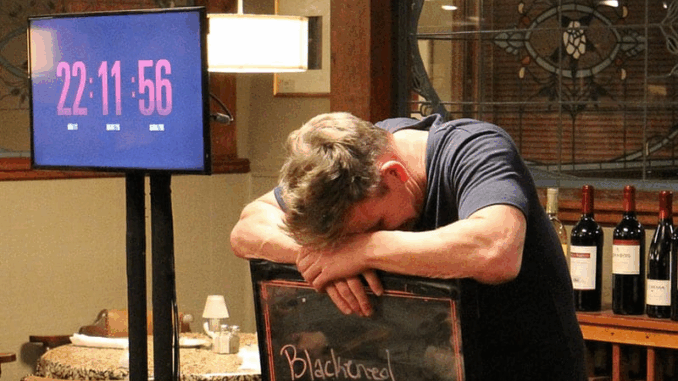
When Gordon Ramsay and his production crew rolled into a small college town, the locals thought they were about to witness TV magic. The chosen location was not a high-end restaurant on the brink of bankruptcy, but a beloved dive bar that had served the community for decades. Students went there after class for $2 beers and $1 pizza slices, and the atmosphere was equal parts chaotic and comforting. It was the kind of place where the sticky tables, loud jukebox, and mismatched chairs were part of the charm.
The producers pitched the visit as a transformation, a chance to “save” the bar from fading into obscurity. But what many locals didn’t realize was that in Ramsay’s world, saving often meant stripping a place down to fit a camera-ready narrative. The filming process was fast and intense. Decorations were ripped out. The menu was rewritten overnight. When the doors reopened, the familiar dive had vanished.
Gone were the cheap drinks and quick slices that kept the place buzzing until last call. In their place was a stripped-down menu of just ten or twelve items, each priced at no less than fifteen dollars. Longtime patrons were stunned. “People stopped coming altogether, and this was before Covid,” one former regular said. “Sure, the décor could have used some love, but nobody came here for fancy food. They came for the cheap beer, the cheap pizza, and the people.”
Some viewers believe the episode was part of Ramsay’s 24 Hours to Hell and Back, a show designed to overhaul restaurants in a single day. In one memorable segment, the owner with dreadlocks became a focal point for TV drama, but behind the scenes, locals say the real drama was the slow collapse of the bar’s customer base. For years, the business had thrived by catering to students and locals on a budget. After the makeover, those same people felt priced out of a place they once considered theirs.

What happened next was inevitable. The sleek new look might have worked for TV, but it did not work for the people who actually kept the business alive. Sales dropped. The energy faded. The owners, realizing their mistake, started to reverse the changes. Old favorites quietly reappeared on the menu. Some of the cheap drink specials returned. The décor softened, bringing back a little of the original dive bar spirit. But once the bond between a local business and its community is broken, it is not easy to rebuild.
This story is far from unique. Ramsay’s makeovers often create a picture-perfect “after” that plays well for viewers, but the reality for the businesses involved is more complicated. A bar or restaurant that survives on loyal regulars can lose its identity overnight when it is redesigned to please a national audience. For the producers, it is a great storyline. For the locals, it can feel like losing a part of their culture.
In the end, the bar that once smelled of beer and pizza now carries the faint echo of a TV production that came and went. It is cleaner, sleeker, and more expensive. But for those who remember the way it was, it will never truly be the same.
